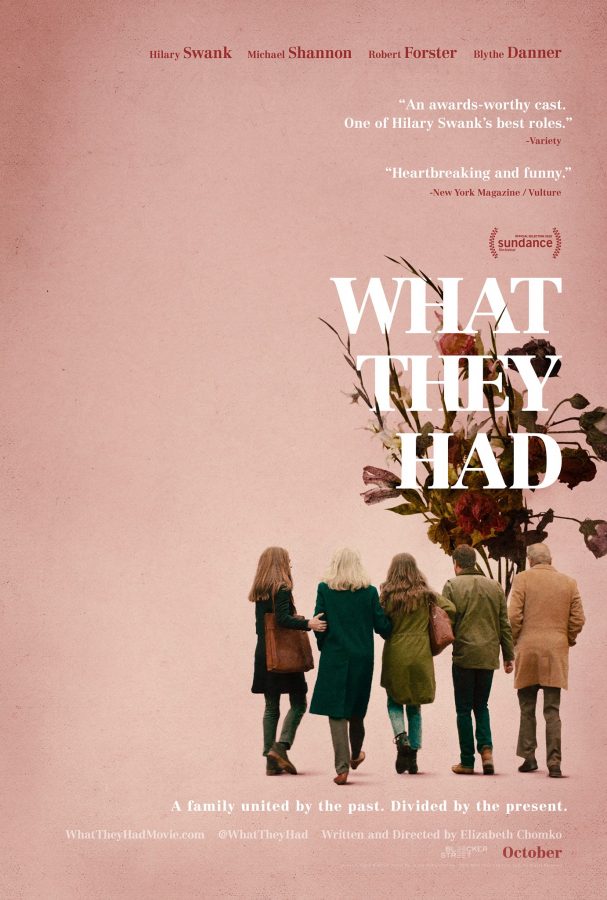One moment, Ruth (Blythe Danner) is giving her daughter, Bridget (Hilary Swank) solemn advice on her tenuous marriage. A mere minute later, Ruth is a child, mistaking Bridget for her mother and asking why there is a strange man in her bed. Such is the fickle nature of Alzheimer’s, the disease explored in writer and director Elizabeth Chomko’s debut film “What They Had.” The film is an intimate, understated family drama elevated by gripping performances from its strong ensemble cast.
Ruth’s dementia-addled disappearance into a cold Chicago snowstorm is the catalyst for an impromptu family reunion, as her acerbic son Nicky (Michael Shannon) summons Bridget in from California to convince their father, Burt (Robert Forster), to place their mother in a memory-care facility. Burt, a headstrong Korean War veteran grounded by his Catholic faith, staunchly opposes Nicky’s recommendation, bounded by his belief that “love is commitment … in sickness or in health, ‘til death do us part.” Old family grievances soon arise and Bridget is forced to examine her own rocky marriage and frosty relationship with her daughter, Emma (Taissa Farmiga), who was evicted from her college dorm for drinking.
The cast of veteran actors sink their teeth into portraying the underlying family tensions that emerge from this decision. Bridget’s earnest indecisiveness is perfectly embodied by Swank, as the audience sees the character torn between her divided loyalties to her brother and father. Her scenes with Shannon crackle with the authentic tautness of sibling relationships.
Although “What They Had” is nominally centered around a mother-daughter relationship, it is the dynamic between the two men that ironically serves as the film’s most compelling component. Shannon is delightfully caustic as Nicky, a son who longs to escape the shadow of his stubborn, overbearing father but bears too many similarities to him. Shannon is able to simultaneously convey both Nicky’s hardened, acerbic exterior and his underlying vulnerability and insecurity with deft skill.
Just as the Ertz family is dominated by its patriarch, “What They Had” belongs to Forster. Forster’s Burt is a bulldozer who commands attention each time he appears on screen. The veteran actor approaches Burt with nuance and subtlety that show a man stubbornly resolute in his faith and his wholehearted love for his wife rather than merely a domineering bully. In Shannon and Forster’s final scene, where Burt finally visits Nicky’s bar after previously belittling his occupation as a bartender, the two actors skillfully illustrate the fraught father-son dynamic without a single word being uttered.
Chomko understands her limited scope of operation and does not seek to extend into unnecessarily ambitious narrative territory. Indeed, “What They Had” possesses the intimacy of a stage production, with Burt and Ruth’s suburban Chicago apartment serving as the primary setting. The film is also surprisingly funny, milking some of Ruth’s delusions for humor in a way that demonstrates the characters’ need for laughter to cut their palpable family tension without disrespecting or mocking her disease.
“What They Had” does not employ the cloying mawkishness present in other movies about dementia. Rather, Chomko sprinkles sentimentality scrupulously in a tight screenplay that indicates her promise as a storyteller. “What They Had” allows audience sympathy to arise naturally instead of through narrative manipulation, making those moments of emotional clarity and intimacy authentically and powerfully resonating.
Email George Zhai at [email protected].

























































































































































